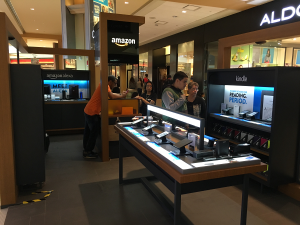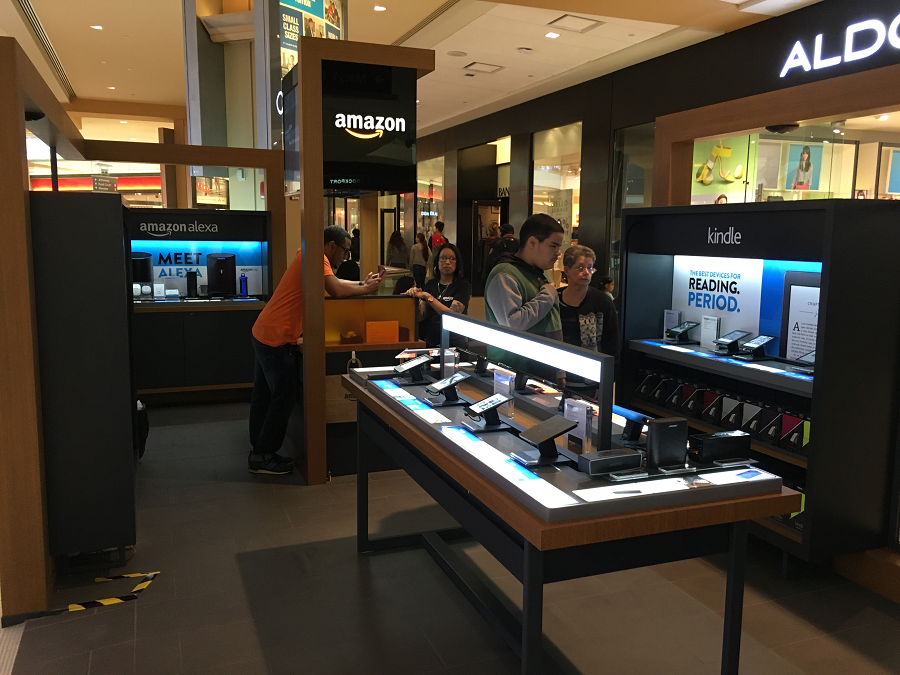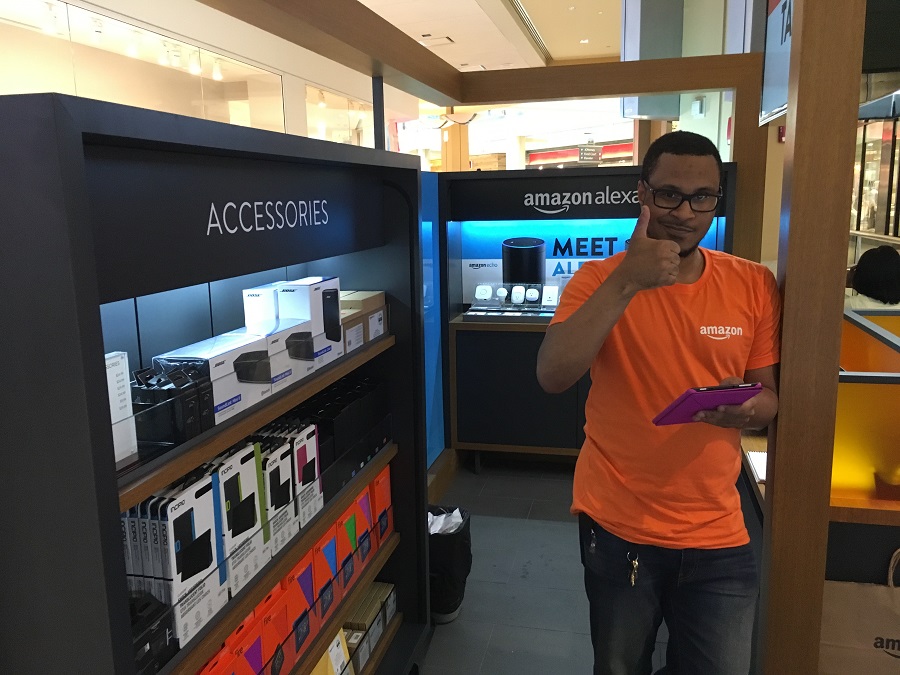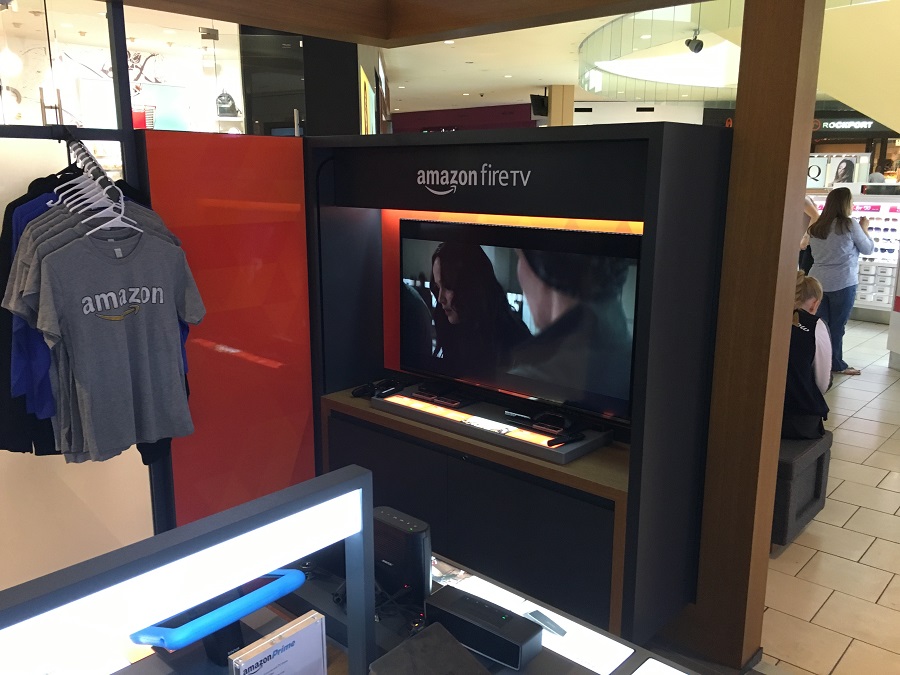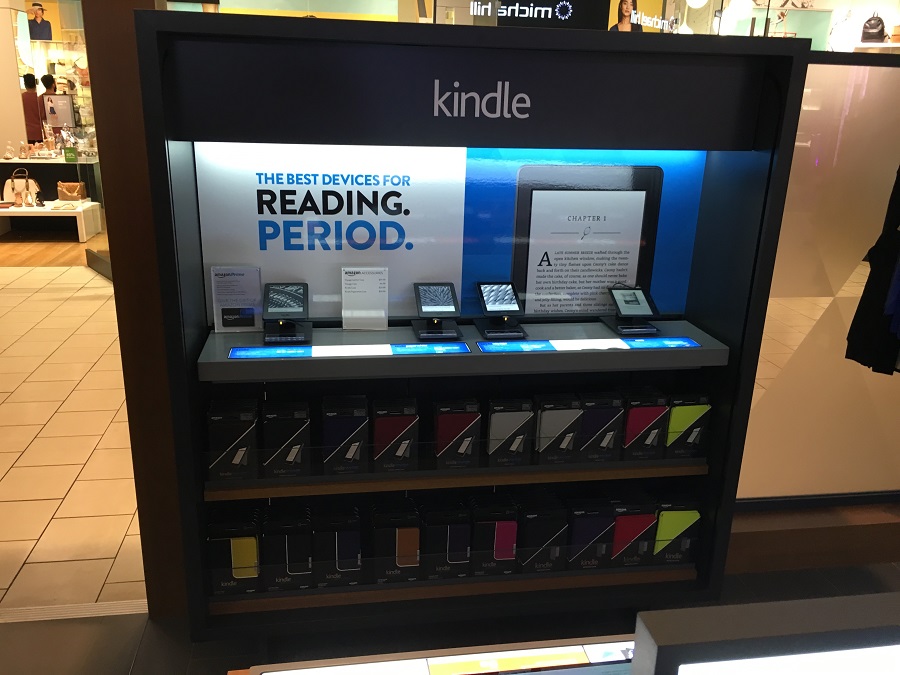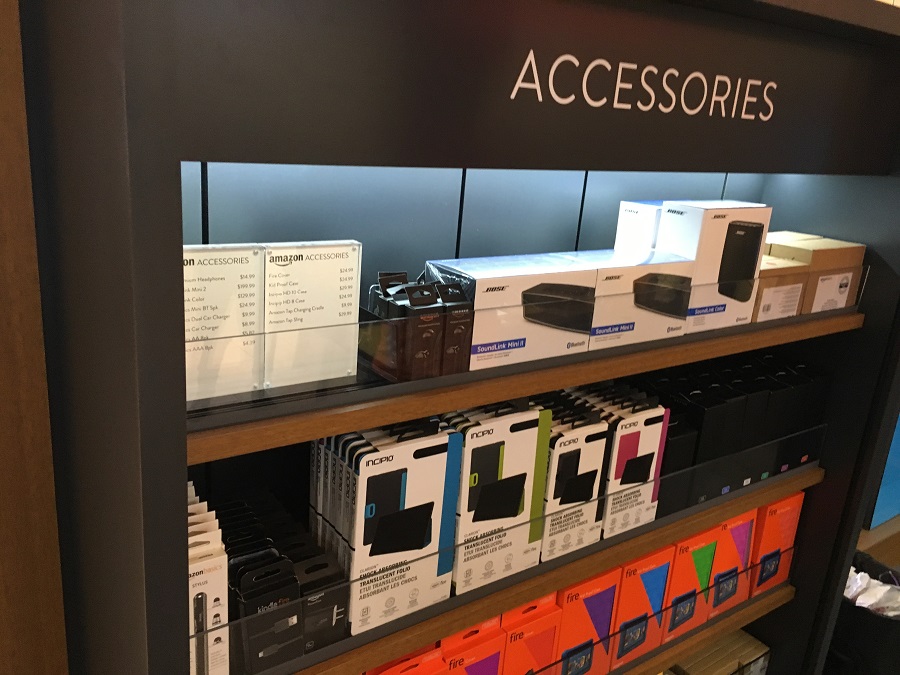Experiential Marketing, Amazon Pop-Up Shops & Virtual Reality 5/22/2016
During a weekend visit to the Queens Center mall in New York, I had the opportunity to experience Amazon’s latest Pop-Up Shop, which had just opened in a prime location on the mall’s main floor. About the size of a large kiosk you would see scattered throughout malls across the country, it featured all of Amazon’s latest products, including Amazon Echo, Fire TV, Kindle e-readers, as well as some Amazon-branded merchandise.
I say “experience” because that’s exactly what the Pop-Up shop delivers, an experience. “The shop gives customers the ability to take the Amazon products for a test run,” one of the shop associates said. “This way they can actually see how they work in a live setting in a way that you can’t online.”
What really stood out about the pop-up shop, however, was how knowledgeable and engaging the Amazon associates were; they not only patiently walked me through all of the features and benefits of each product in which I was interested, but they also explained how they use them personally – they were all power-users of Amazon products.
All of the products were there to be touched, played with, and tested, with no one rushing you to close a sale, though happy to help if you would like to make a purchase. I never felt pressured to leave or to buy something. All the associates were concerned with was that I learned everything I wanted to learn and tried every product I wanted try. It was a tremendously enjoyable brick and mortar retail experience, all the more so as it was surprisingly provided by a retailer with no traditional brick and mortar stores, and ironically, many traditional brick-and-mortar stores would do well to provide such a powerful experience in their stores.(Apple stores excepted -- they already provide such an experience -- they don't have the highest revenue per square foot in retail for nothing).
So, with e-retailers invading the brick and mortar space, the line between bricks and clicks is definitely starting to blur. And now it’s going to get even more blurry.
Going Virtual
Enter Virtual Reality. With Facebook’s purchase of Oculus Rift, and practically every major tech and consumer electronics company developing their own virtual and mixed-reality products (HTC’ Vive, Sony’s PlayStation VR, Samsung’s Gear VR, Google’s Cardboard, among many others set to come out this year), virtual reality is quickly becoming real reality.
Here's one way retailers are going to be able to leverage this technology to take brick and mortar experiential marketing to an entirely new realm: by opening virtual stores inside the consumer’s home. With a headset and haptic-sensor gloves (these are the sensors that vibrate in your PS4 controller when you get shot during a video game), we’ll be able to turn anyone’s living room into a pop-up shop, enabling them to touch, feel, hold, and manipulate products of all kinds, and then order instantly with a voice command, wave of the hand, or even at a virtual checkout stand, if they like.
Indeed, the only experiential aspect of shopping not on the table yet is virtual tasting and smelling of fresh food. But at the rate things are going, we’ll have virtual tasting menus before you know it.

